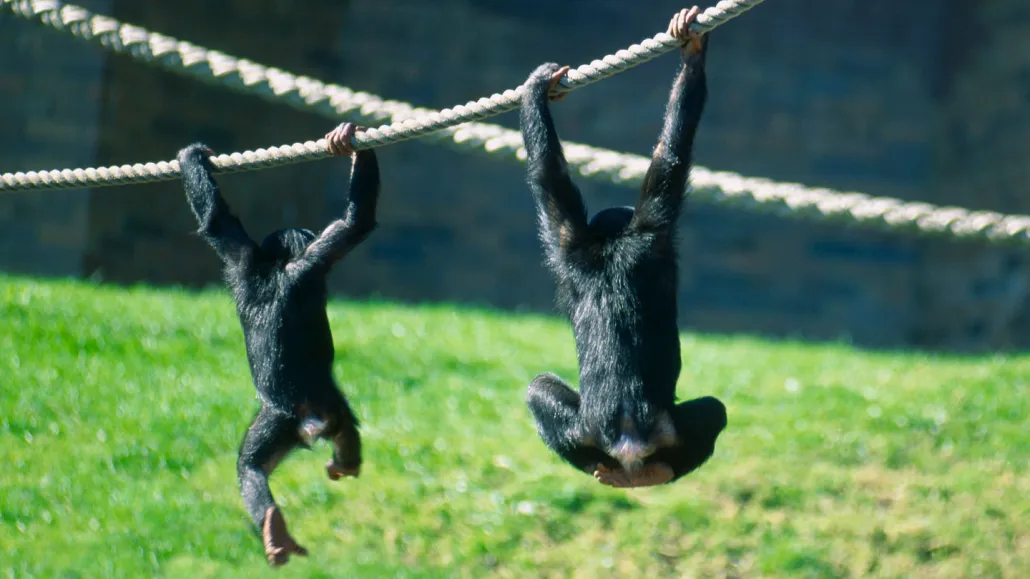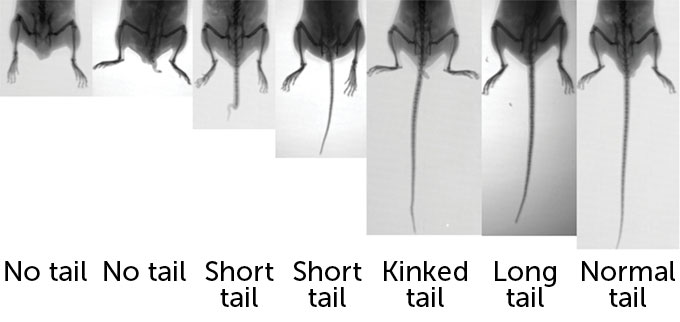A genetic parasite may explain why humans and other apes lack tails
Not having a tail is one way apes differ from monkeys

A new study suggests that apes, including chimpanzees and humans, lack tails because a genetic parasite altered a gene important for tail development when the group diverged from other primates around 25 million years ago.
Grant Faint/The Image Bank/Getty Images
A genetic parasite may have robbed humans and other apes of their tails.
Around 25 million years ago, this parasite, a small stretch of repetitive DNA called an Alu element, ended up in a gene important for tail development, researchers report in the Feb. 29 Nature. The single insertion altered the gene Tbxt in a way that seems to have sparked one of the defining differences between monkeys and apes: Monkeys have tails, apes don’t.
“It was like lightning struck once,” says Jef Boeke, a geneticist at New York University Langone Health, and ape behinds ultimately became bare.
The genetic tweak may also give insight into why some babies are born with spinal cord defects such as spina bifida, when the tube that holds the cord doesn’t close all the way (SN: 12/6/16).
Alu elements are part of a group of genetic parasites known as transposons or jumping genes that can hop across genetic instruction books, inserting themselves into their hosts’ DNA (SN: 5/16/17). Sometimes, when the gene slips itself into a piece of DNA that is passed down to offspring, these insertions become permanent parts of our genetic code.
Transposons, including more than 1 million Alu elements, are found throughout our genome, says geneticist and systems biologist Bo Xia of the Broad Institute in Cambridge, Mass. Researchers once thought of transposons as genetic garbage, but some have central roles in evolution. Without transposons, the placenta, immune system and insulation around nerve fibers may not exist (SN: 2/16/24).
And humans might still have tails.
To find out how apes lost their tails, Xia, then at NYU Langone Health, Boeke and colleagues analyzed 140 genes involved in vertebrate tail development. The team found that in monkeys, including baboons and rhesus macaques, the Tbxt gene was missing a chunk of DNA that’s found in humans, chimpanzees and other apes. It was a “eureka moment,” Boeke says. The insertion may have appeared around the time apes diverged from African and Asian monkeys, around 25 million years ago.
But the missing chunk was in a part of the gene called an intron, a bit of genetic material that isn’t made into proteins. “So why would that even matter?” he asks. A close look at the gene’s structure provided a plausible explanation: The missing bit tweaked Tbxt so that the gene makes a different form of the protein in apes than in monkeys.
Experiments in mice seemed to confirm the hypothesis. Mice, like monkeys, make normal versions of the Tbxt protein and have full-length tails. But when genetically engineered to make shortened versions of the Tbxt protein like apes do, the mice had shorter tails or none at all. Some mice also had spinal cord defects similar to spinal bifida, suggesting that there may be drawbacks to tail loss.

Other genes may also be involved in tail loss. Many more Alu elements are scattered among human introns that could have yet-to-be-known effects on other aspects of human evolution, Boeke and Xia say.
The new findings do begin to unravel how apes lost their tails, says Gabrielle Russo, a biological anthropologist at Stony Brook University in New York. But why it happened, she says, is a much harder question to answer. Research from the early 1900s linked tail loss to muscle changes that helped human bodies move upright, but shifts in posture, as well as learning to walk on two feet, didn’t happen until millions of years later (SN: 9/15/21; SN: 4/14/21). So, it’s unlikely the new findings will shed light on these human traits, Russo says.
A natural next step, Russo says, is exploring whether the genetic underpinnings of tail loss in apes also happened in other mammals with shortened tails or none at all such as koalas, capybaras and bears.






